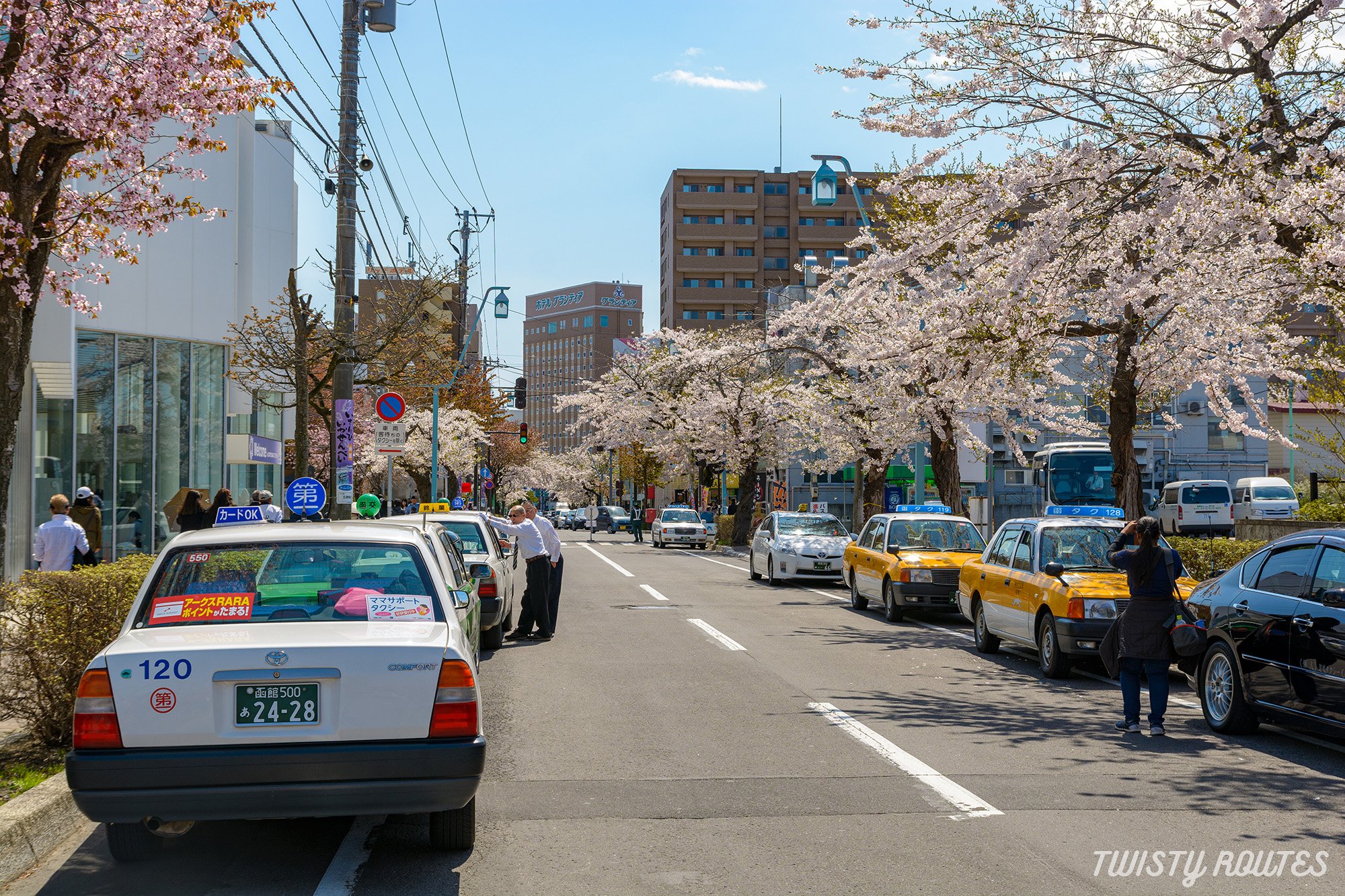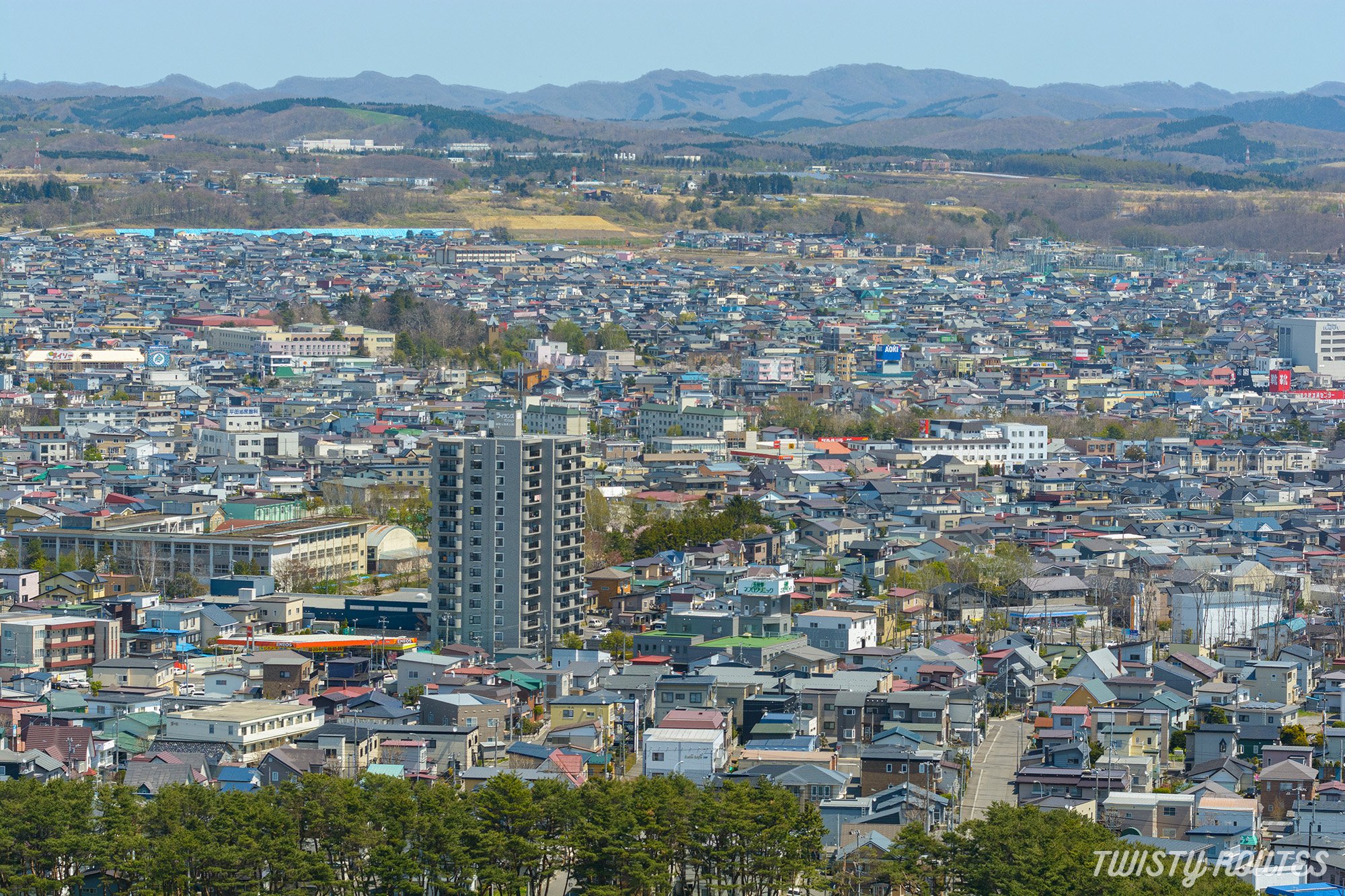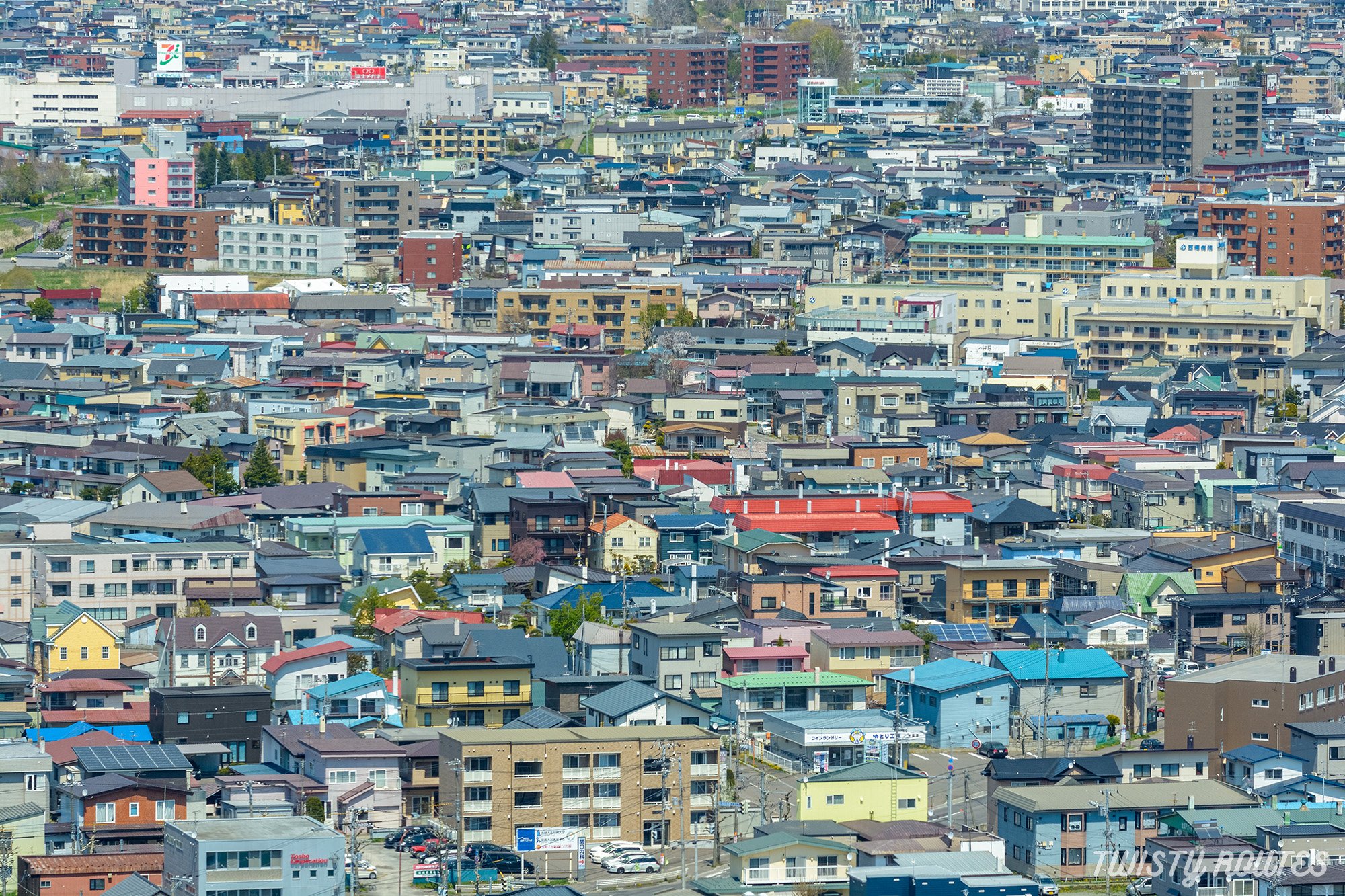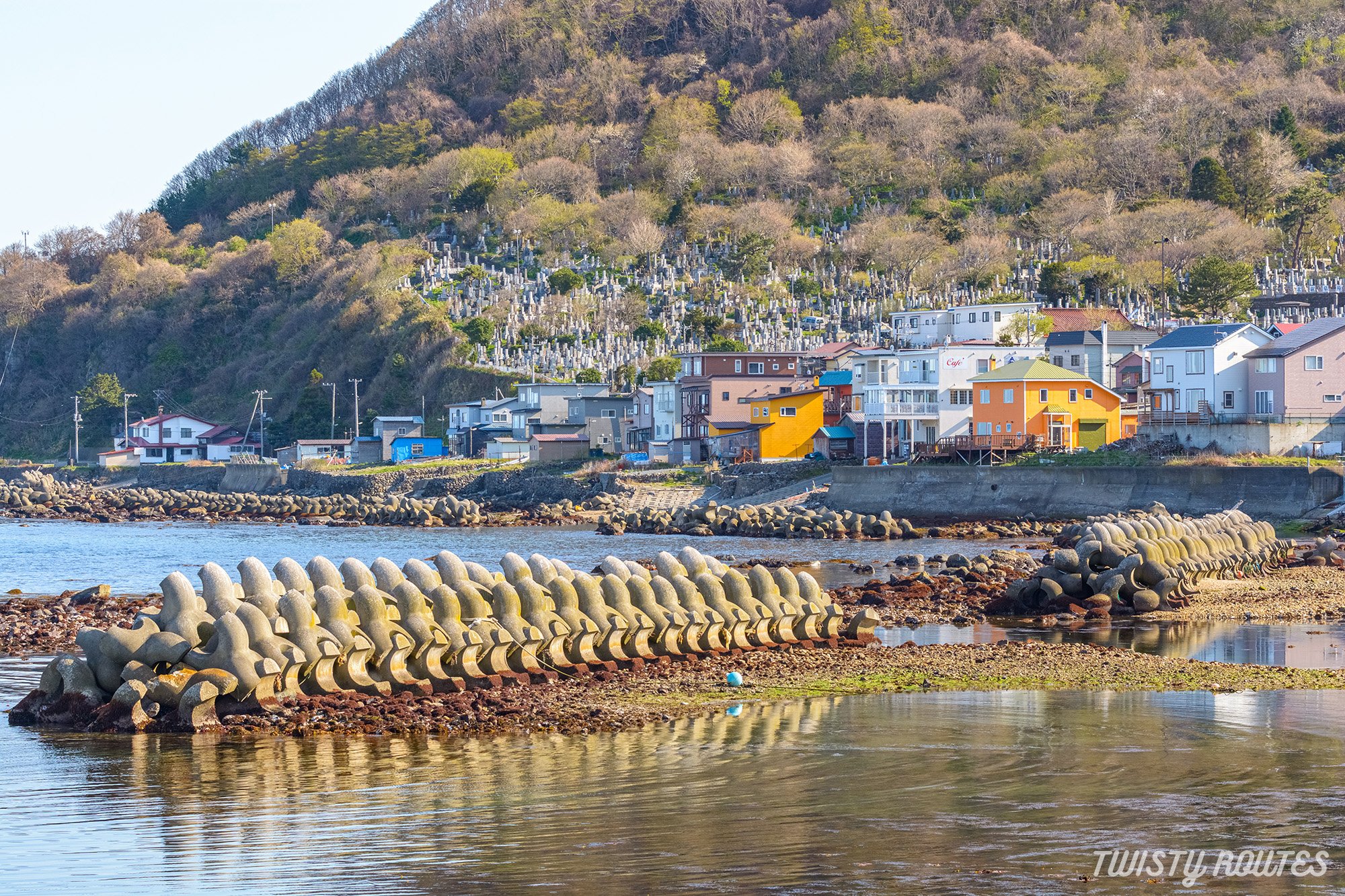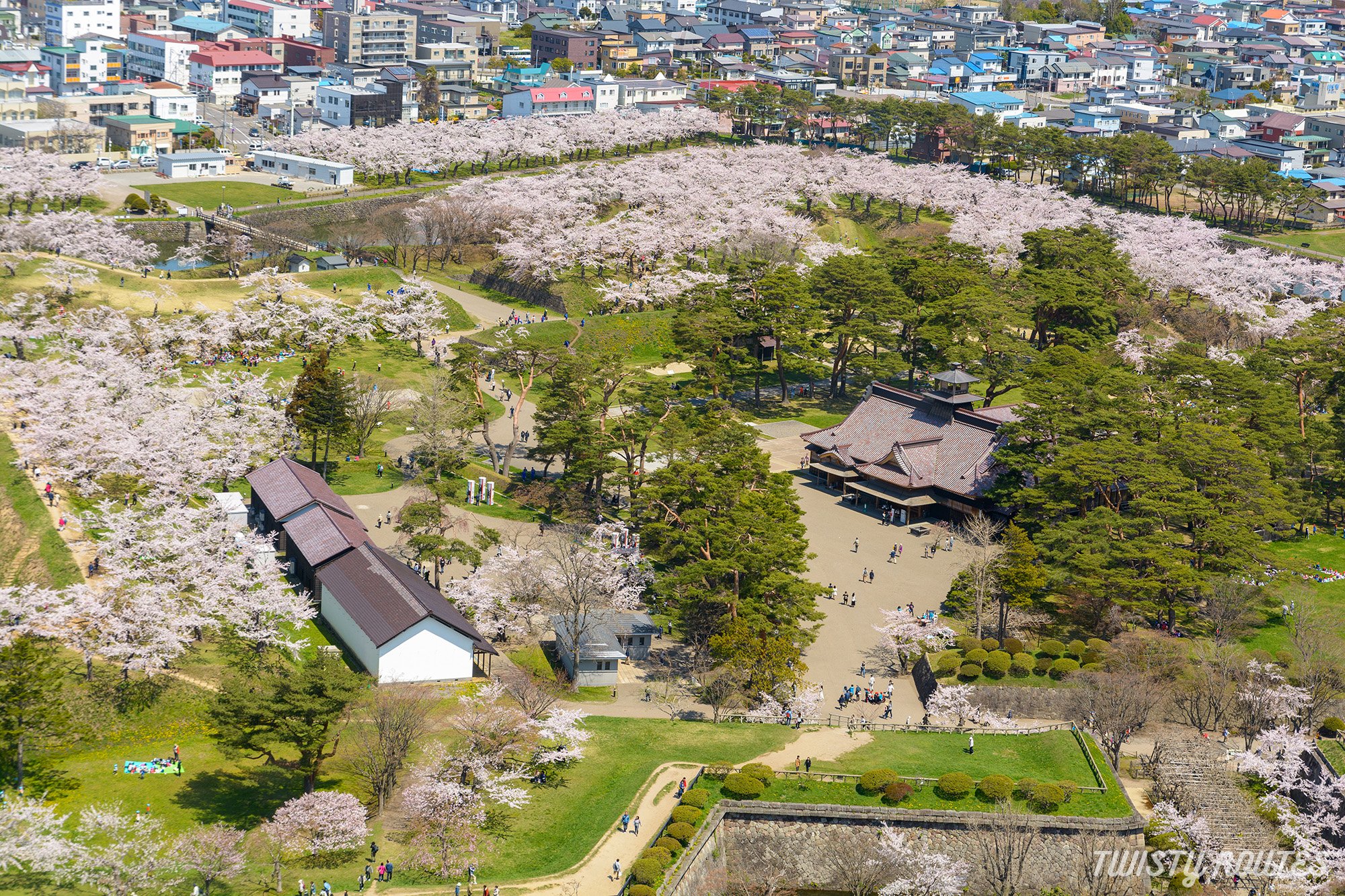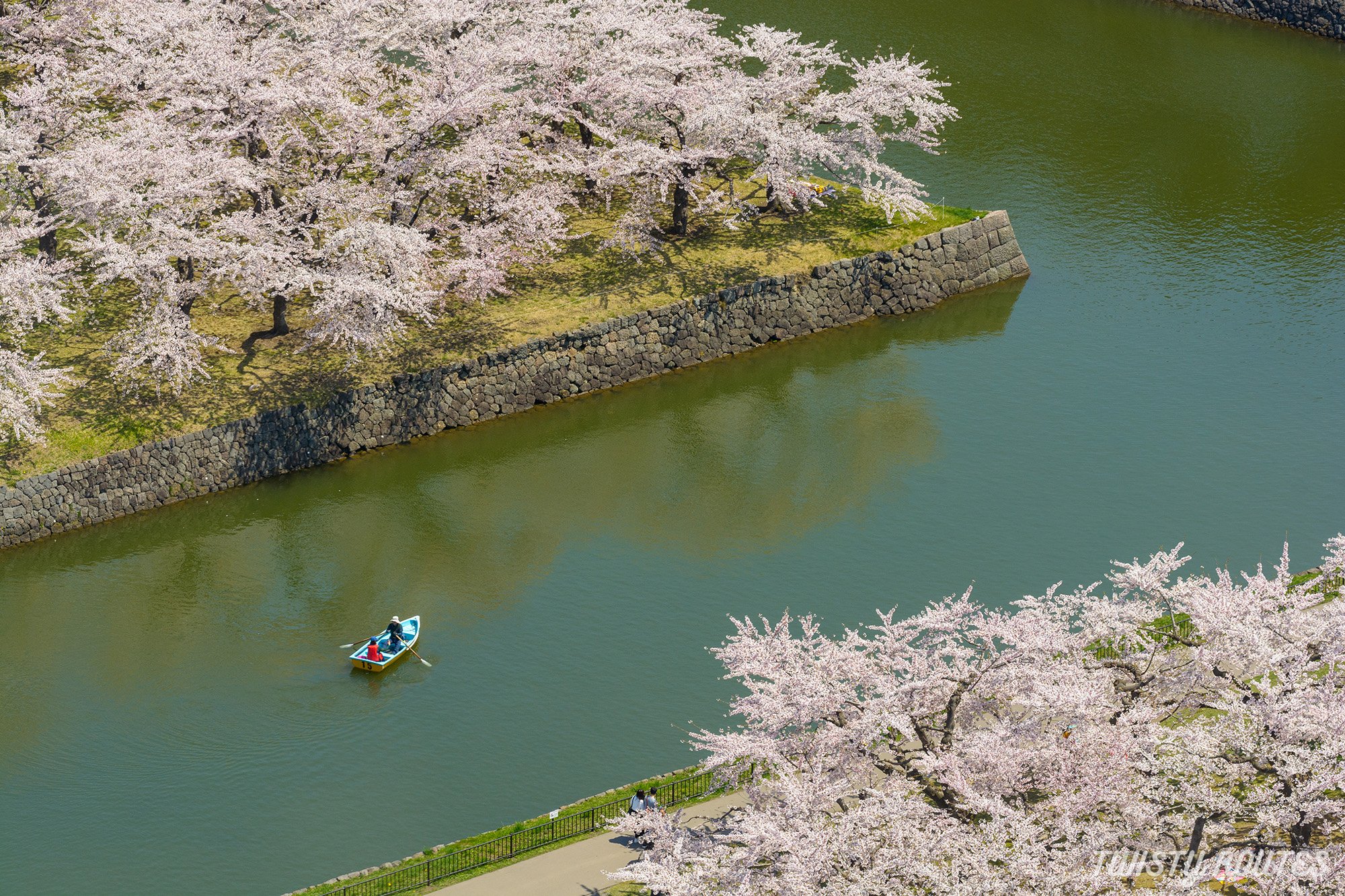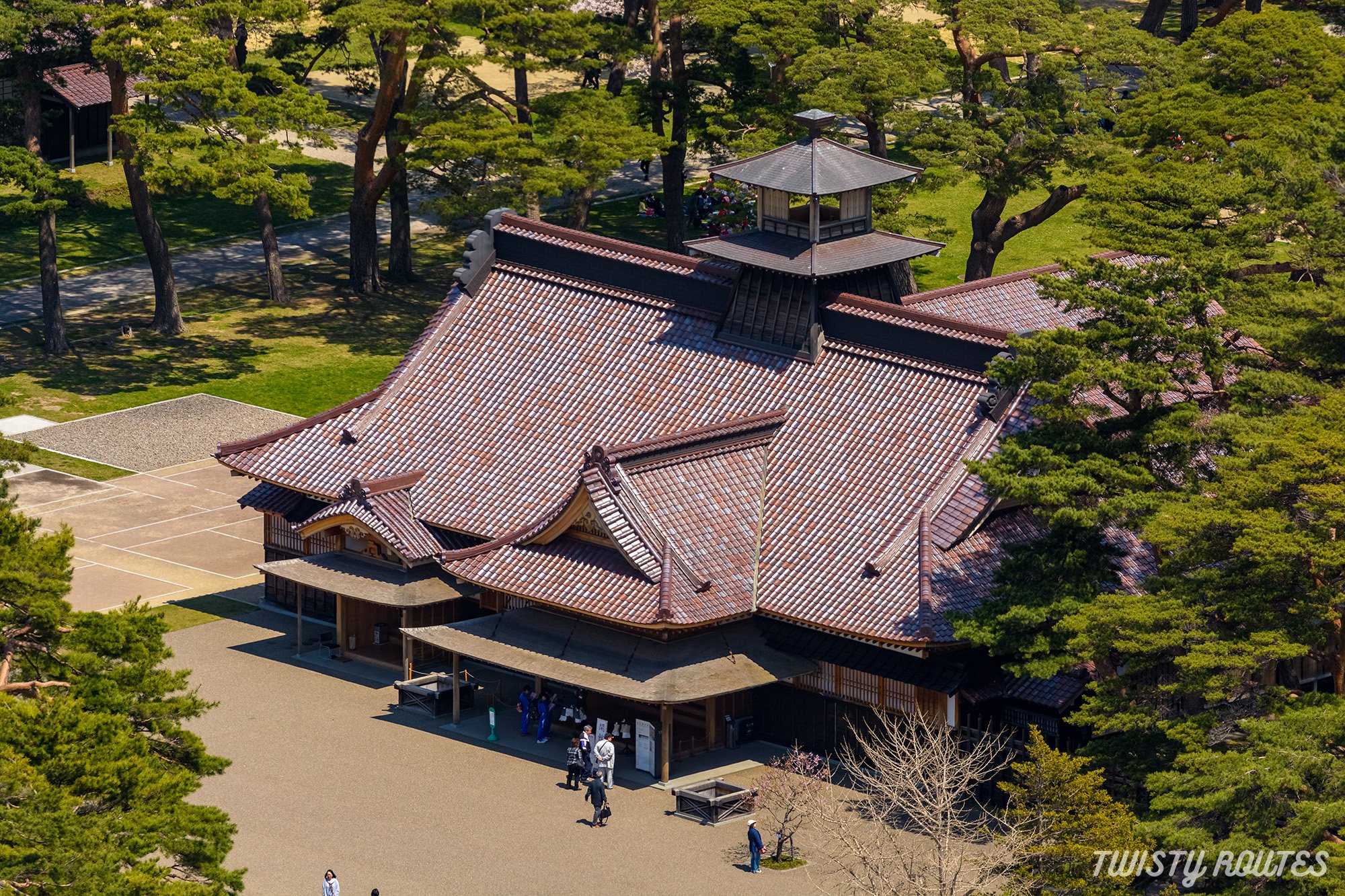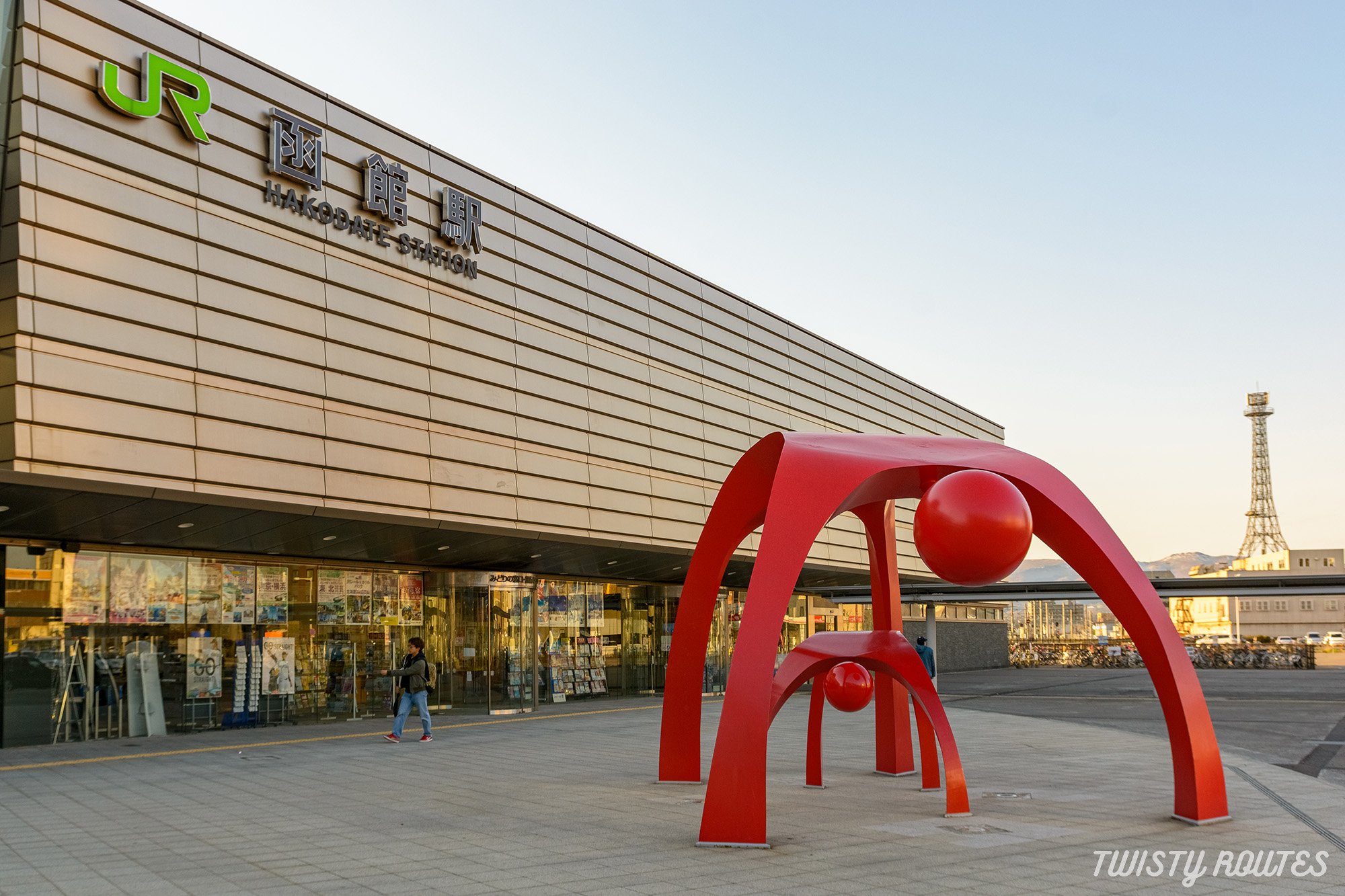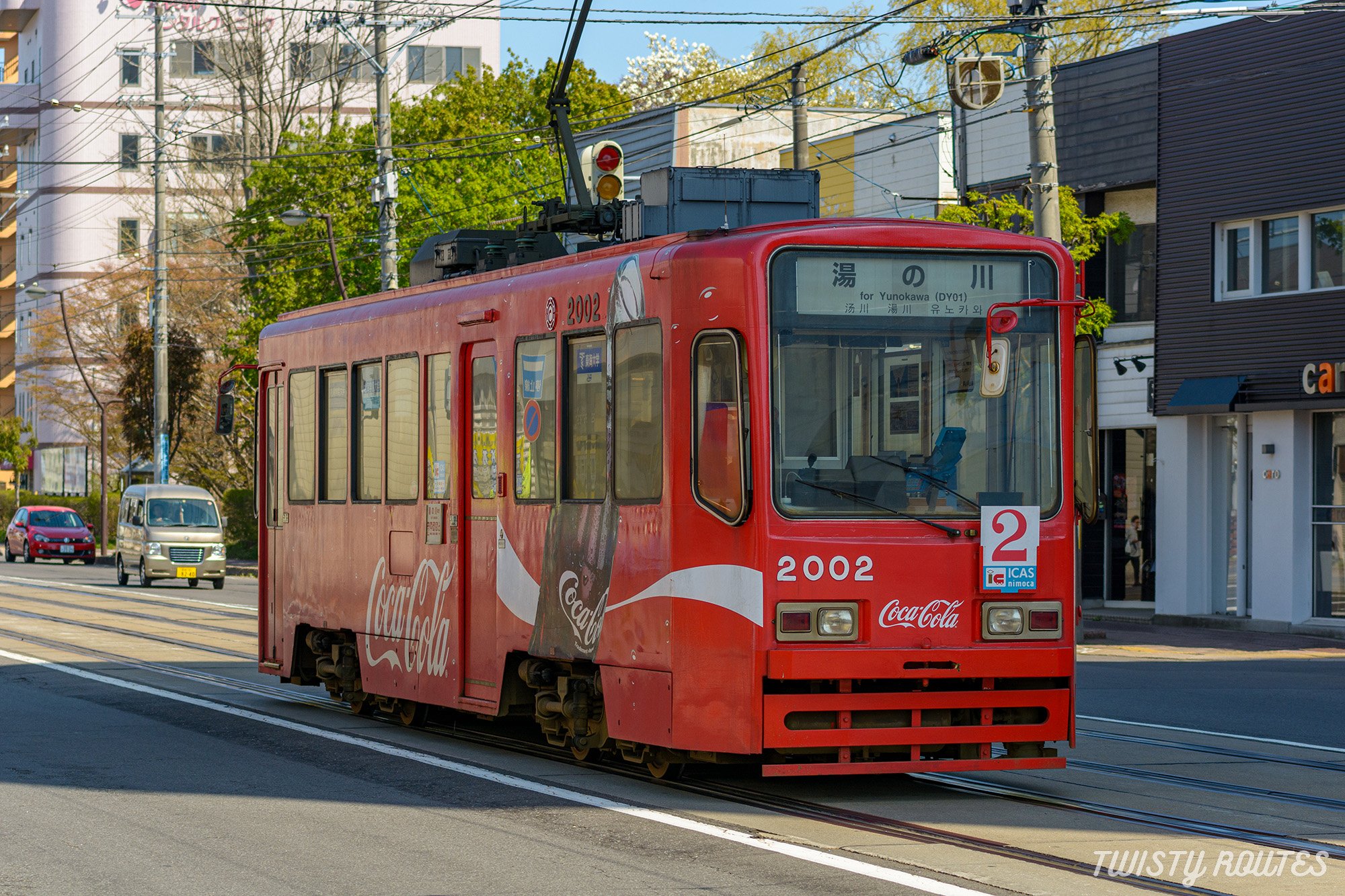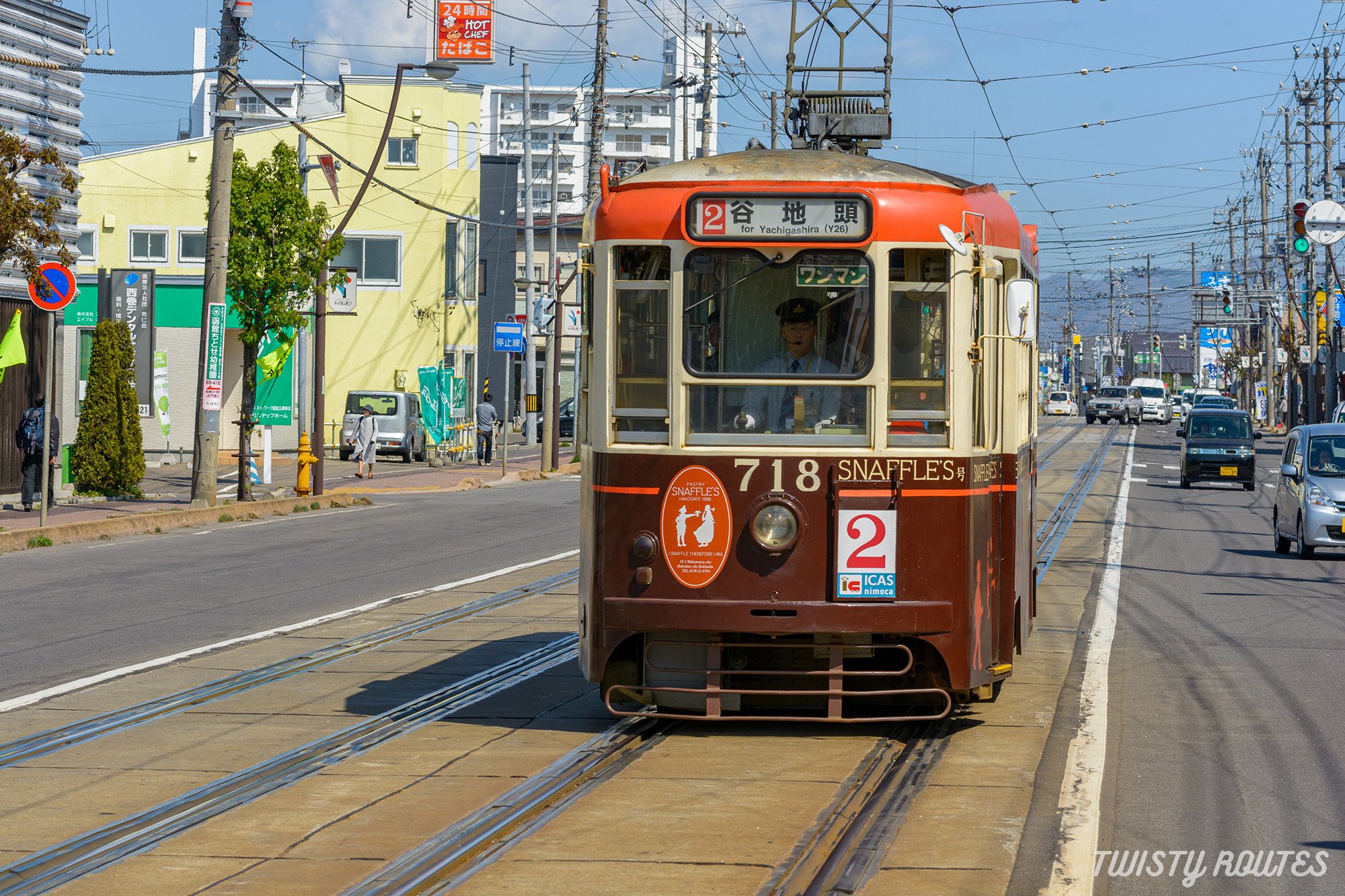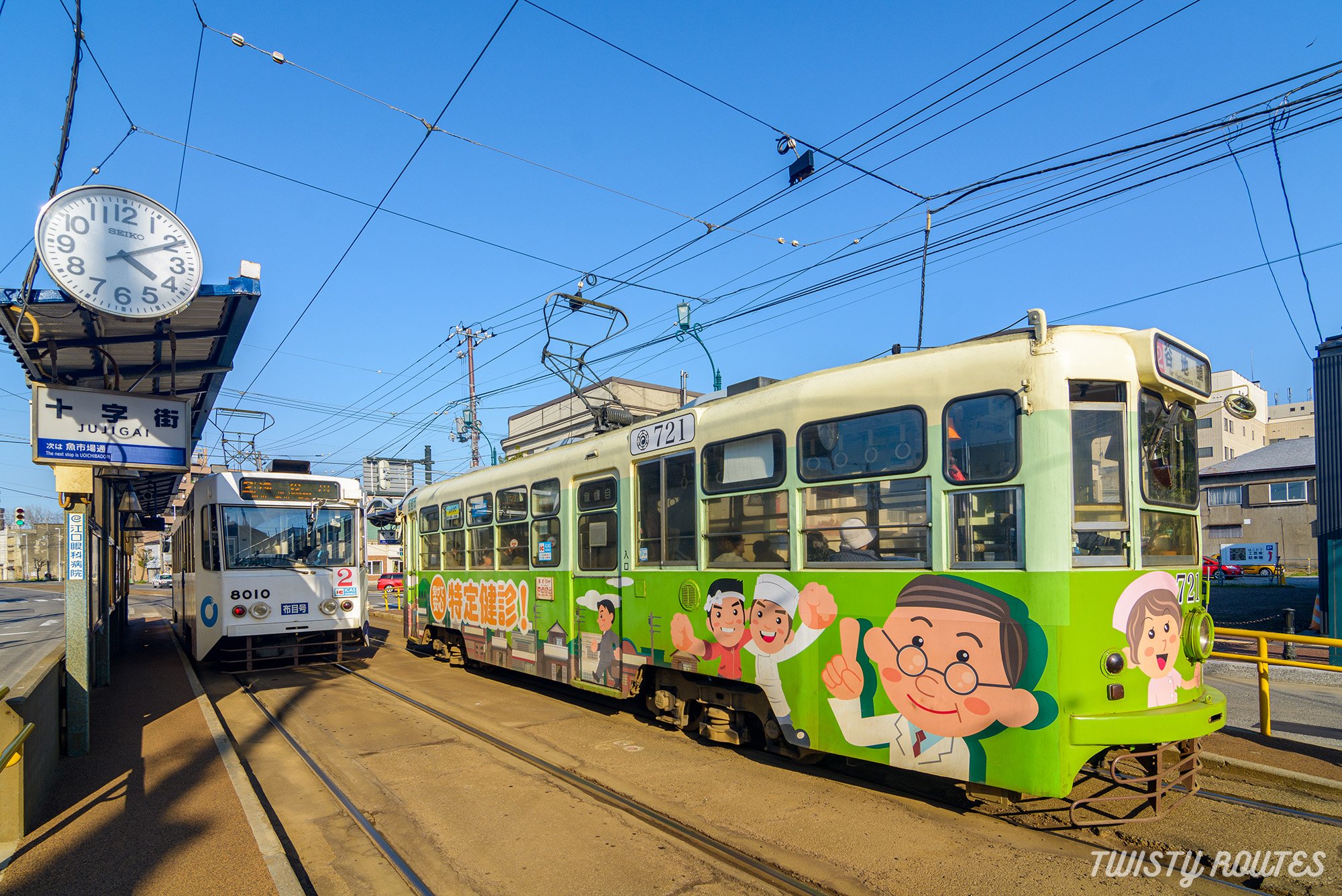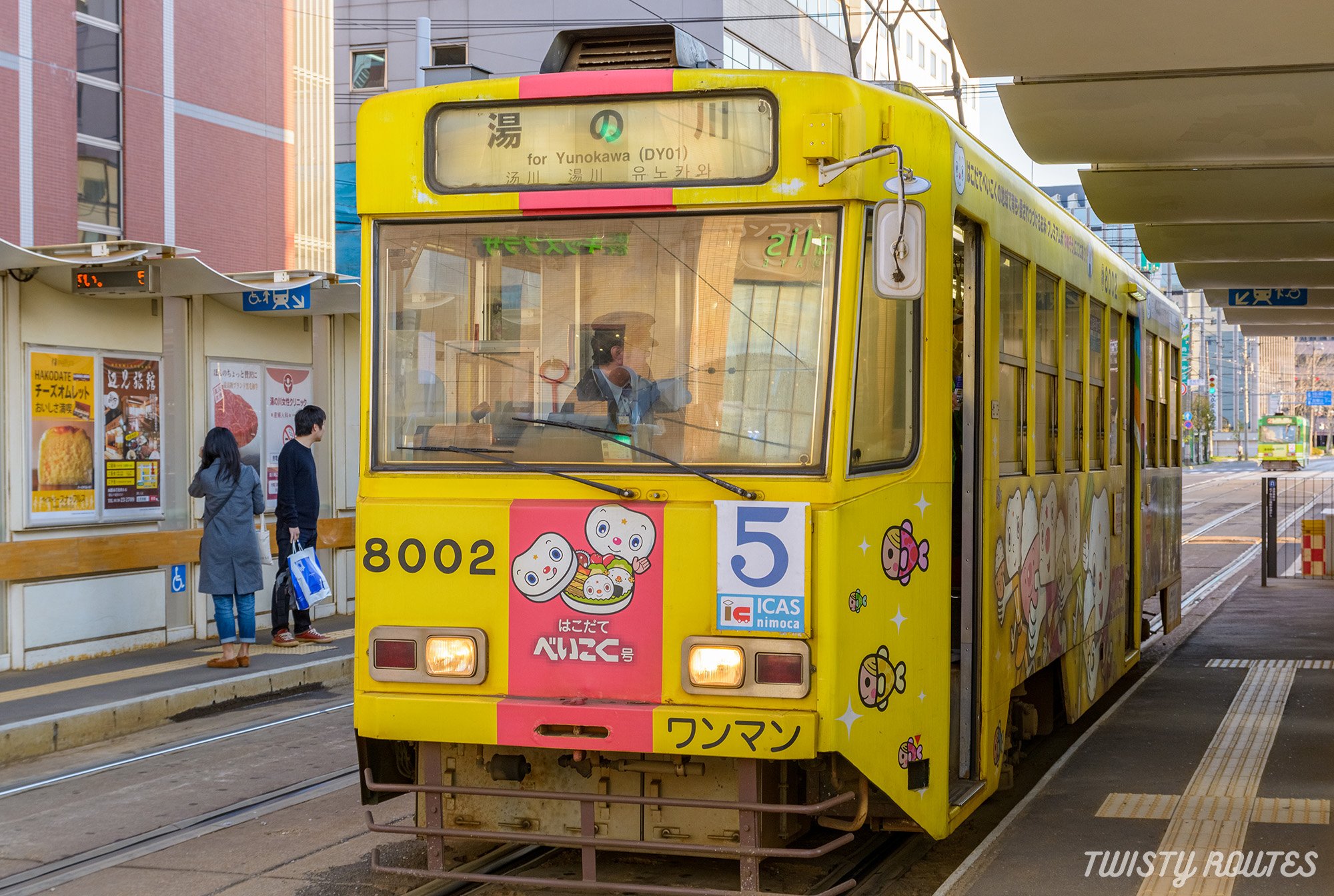Top 5 things to do in Hakodate
While exploring northern Japan and Hokkaido island in early May, we came across this beautiful port city of Hakodate. Hakodate has consistently ranked at the top beside Kyoto and Sapporo. In 2019, Japanese people considered it Japan's most attractive city!
Hakodate (函館) is Hokkaido's third-largest city, located at the island's southern tip. Hakodate city is best known for the spectacular views from Mount Hakodate and its fresh seafood. But there is more to this port city. Here are our top 5 recommendations + 2 bonus things to do in one day in Hakodate.
Mount Hakodate - one of Japan’s top three night view
1. Morning Market
The Hakodate Morning Market (函館朝市, Hakodate Asaichi) starts from 5 am (from 6 am during winter) to noon. It is just a few steps away from JR Hakodate Station. The market area spans about four city blocks. For seafood lovers, popular seafood includes sea urchins, calamari, and the famous Japanese snow crab from the famous Hokkaido waters.
To get here - walk from JR Hakodate station.

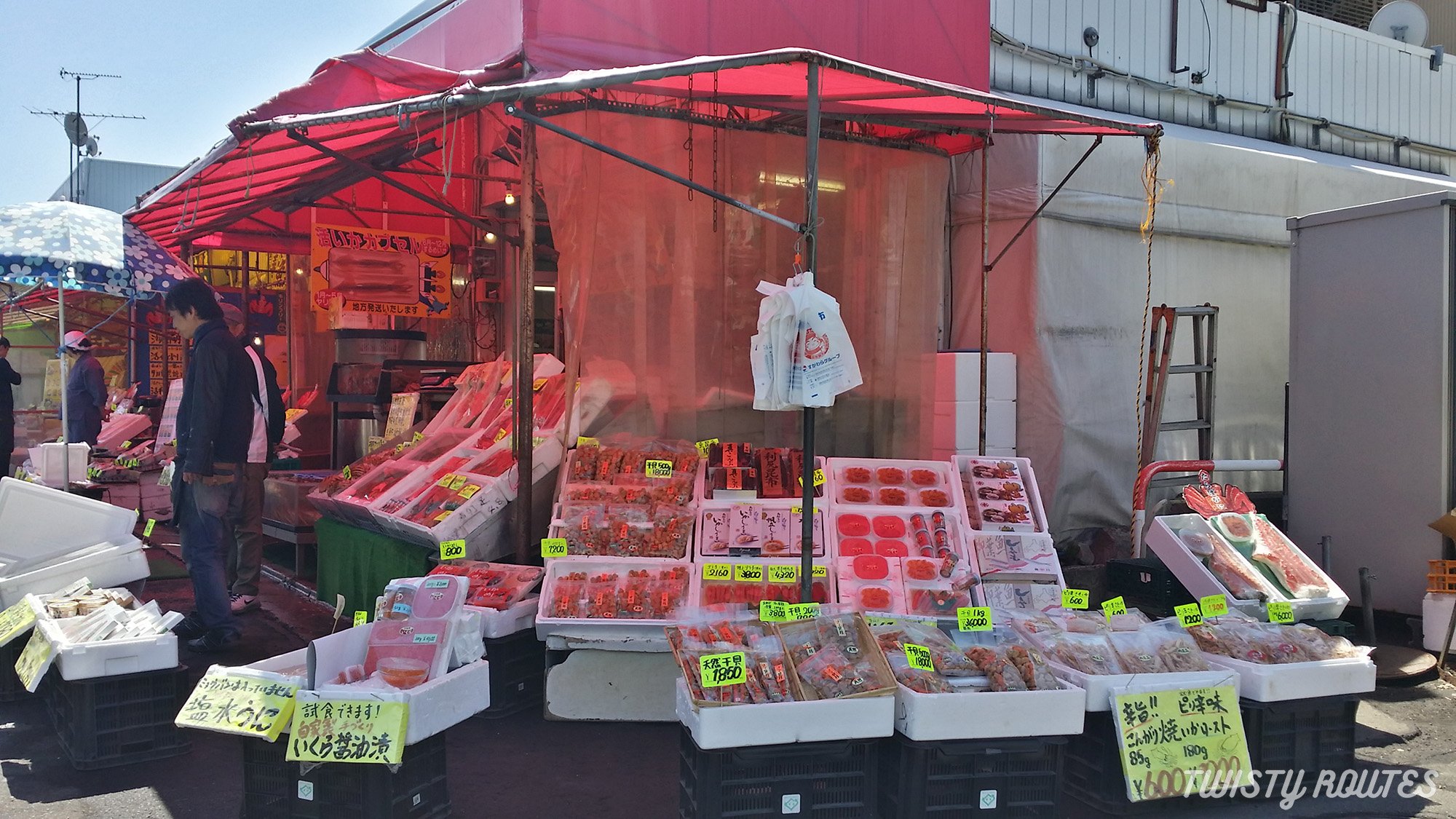
2. Goryokaku Tower and the Fort
Fort Goryokaku is a unique star-shaped, Western-style fortress built in Hakodate towards the end of the Edo Period (1600-1867). This fort eventually turned into a public park, and over 1500 cherry trees were planted along its moats, making it arguably Hokkaido's most famous cherry blossom spot.
Alongside the fort, there is a Goryokaku tower whose height is 103m (including the lightning rod) from sea level. You can get the best views from the observation deck at this tower. You can read our detailed blog on Fort Goryokaku here.
Tram stop: Goryokaku Koen Mae, from here the fortress is another 10 minutes walk.
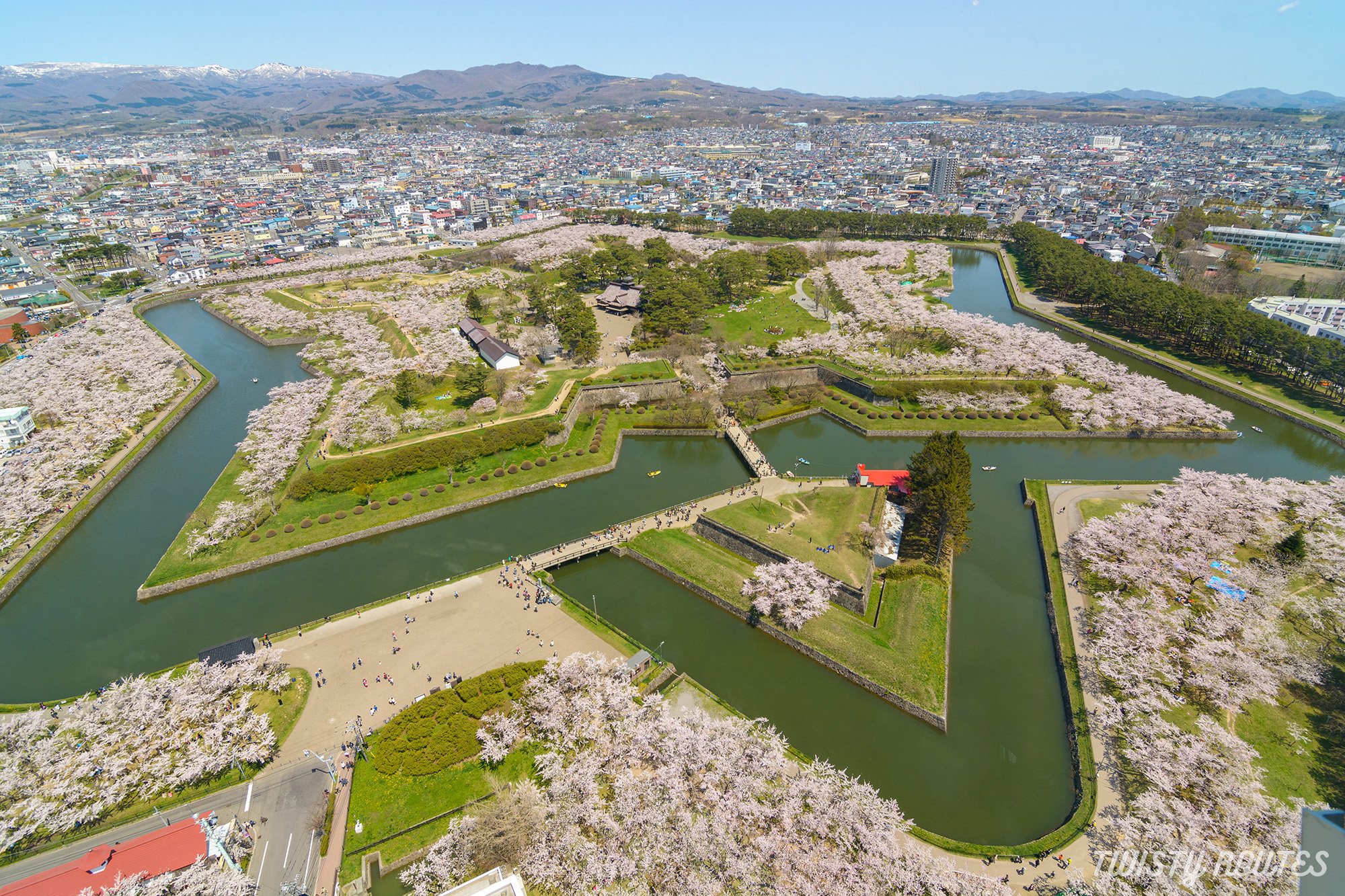
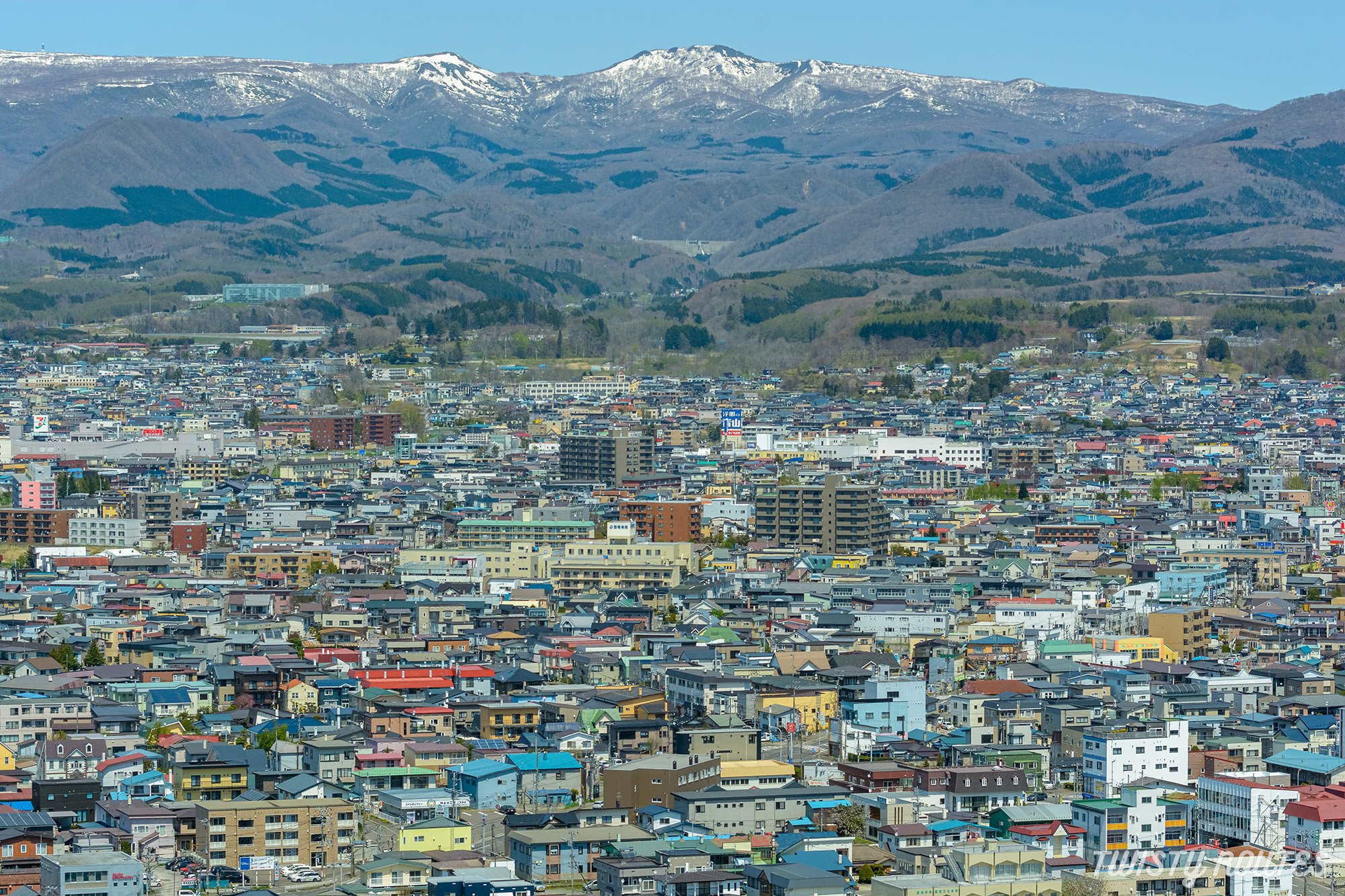
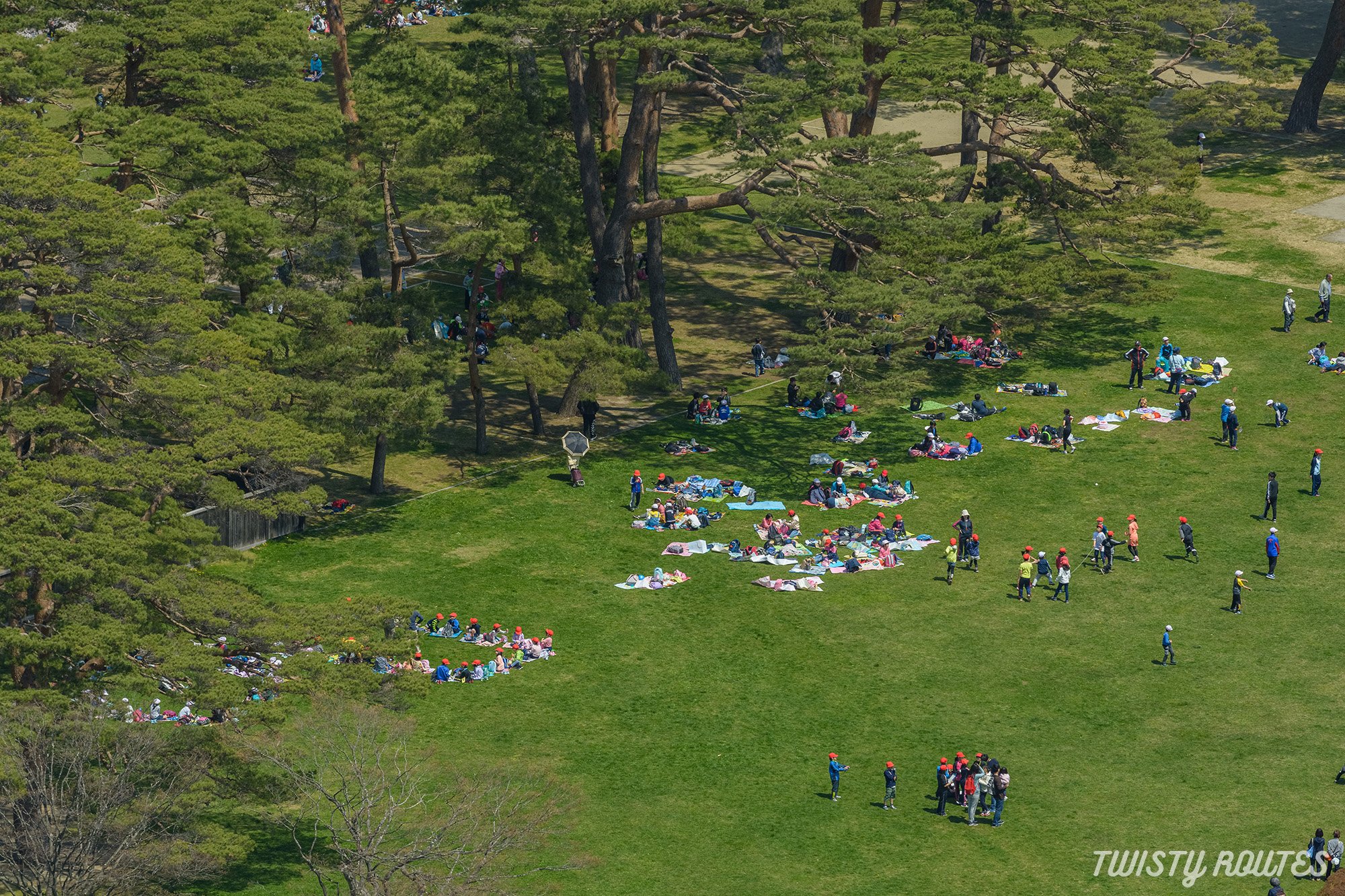
3. RedBrick Warehouses
Towards the end of the Edo period, Hakodate Port was among the first Japanese ports to open to international trade. There are several red-brick warehouses built from the trading days along the waterfront in the bay area of Hakodate. These are now turned into a shopping, dining, and entertainment complex.
Tram stop: Jujigai and walk for 5 minutes to reach here.
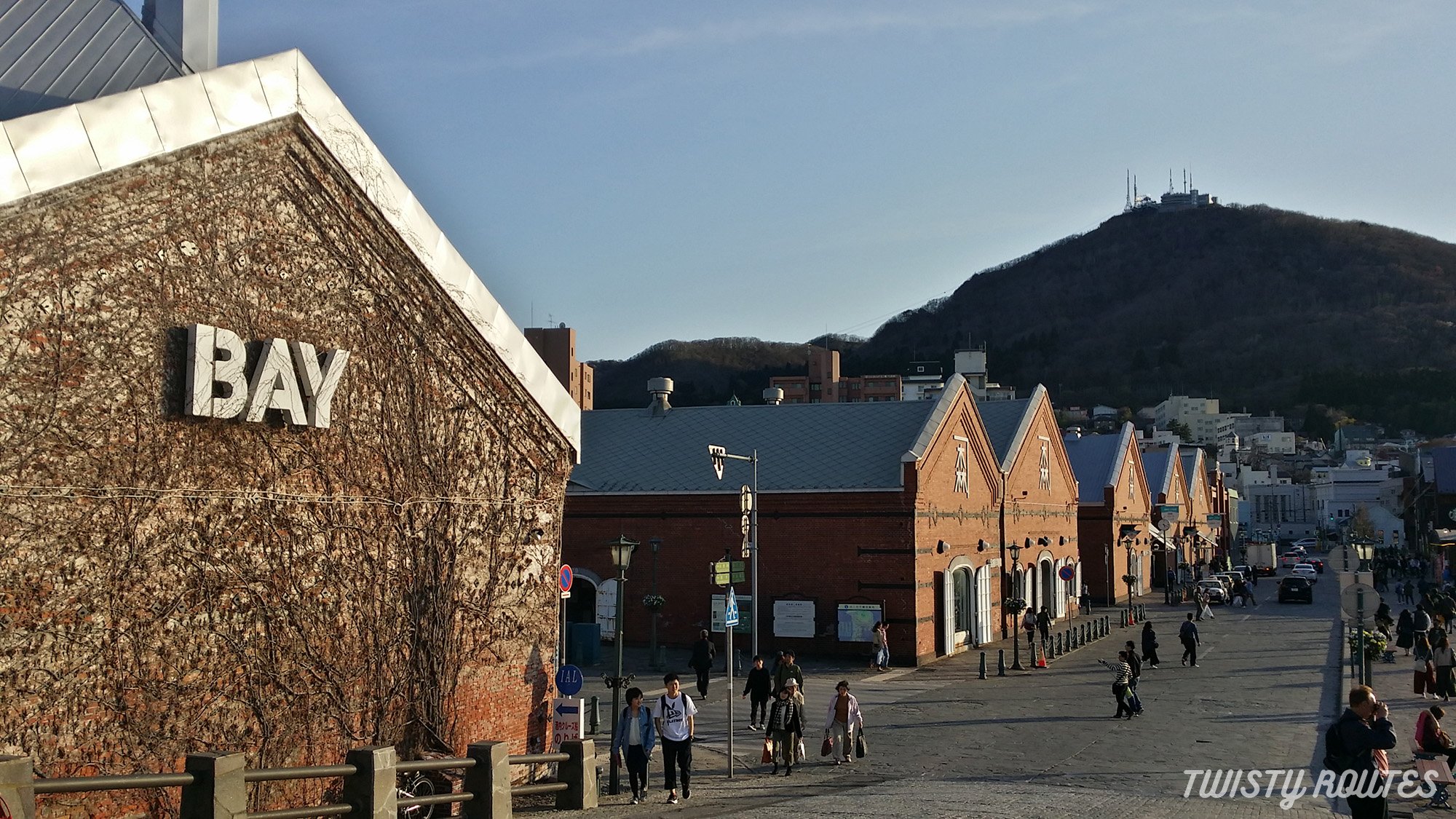
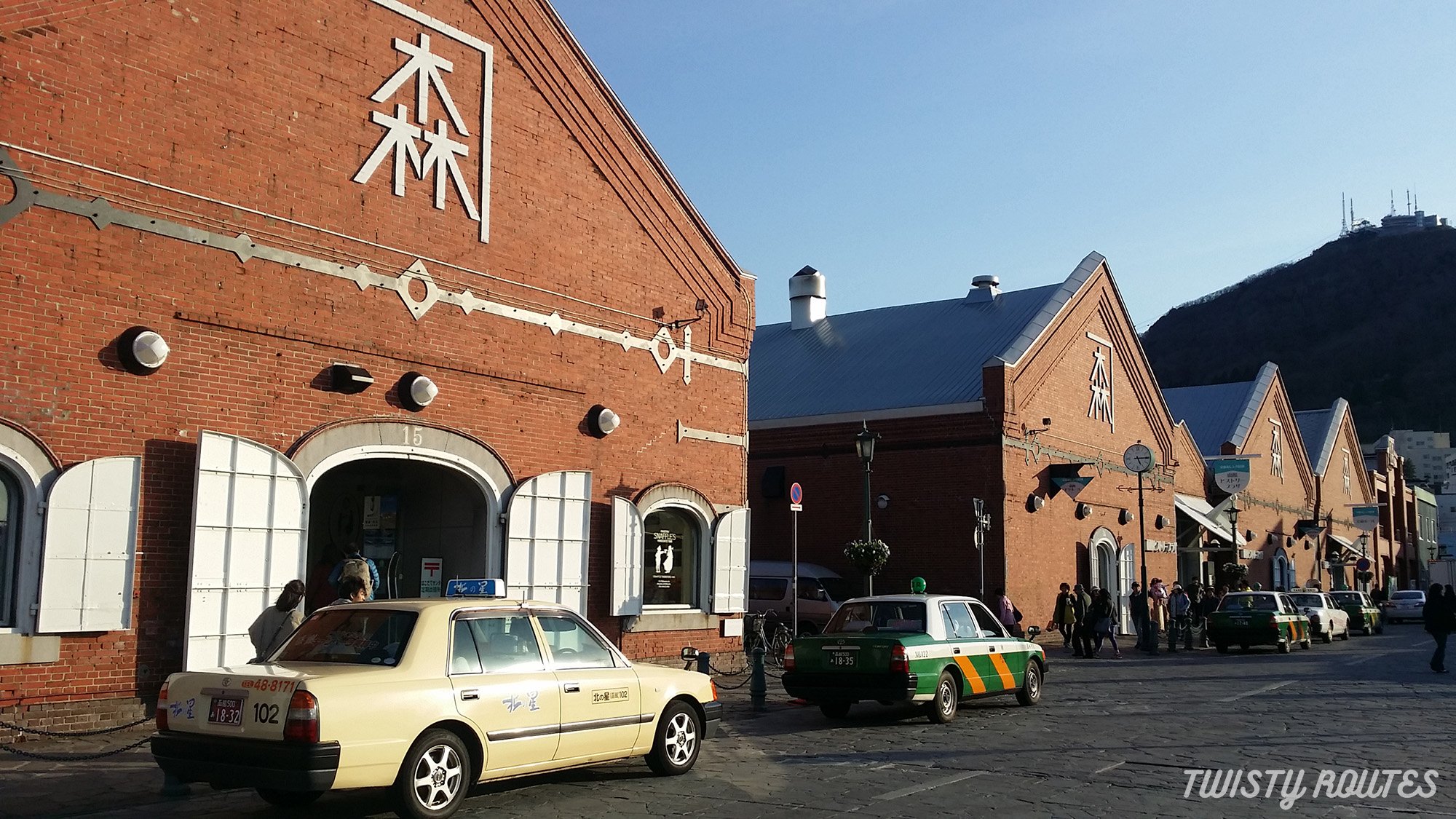

4. Mount Hakodate - Japan’s Top Three Night View
Hakodate city center sits between two vast bodies of water – Hakodate Bay and the Tsugaru Strait. To get the best and unobstructed view of Hakodate city, surrounded by mountains and sea, head up to Mt. Hakodate. You can enjoy the panorama from Mount. Hakodate (函館山, Hakodate-yama). It is so good that the Michelin Green Guide deemed the landmark worthy of three stars (3/3).
We suggest going up just before the sunset to get both the views - before and after the sunset. The golden hour view is the most magical.
You can reach the lower station of the ropeway, by tram, bus, taxi, or car. As we had the day pass, we took the tram.
Tram Stop: Jujigai, 10 minutes walk, and you will arrive at the lower station of the ropeway. From here, 3-5 mins ride to the top by the ropeway.
Ropeway Cost: 1500 yen for a round trip or 1000 yen one way.
Opening Hours: 10:00 am to 9:00 pm (last uphill ropeway 8:50 pm), but check the official website if the timings change when you visit.
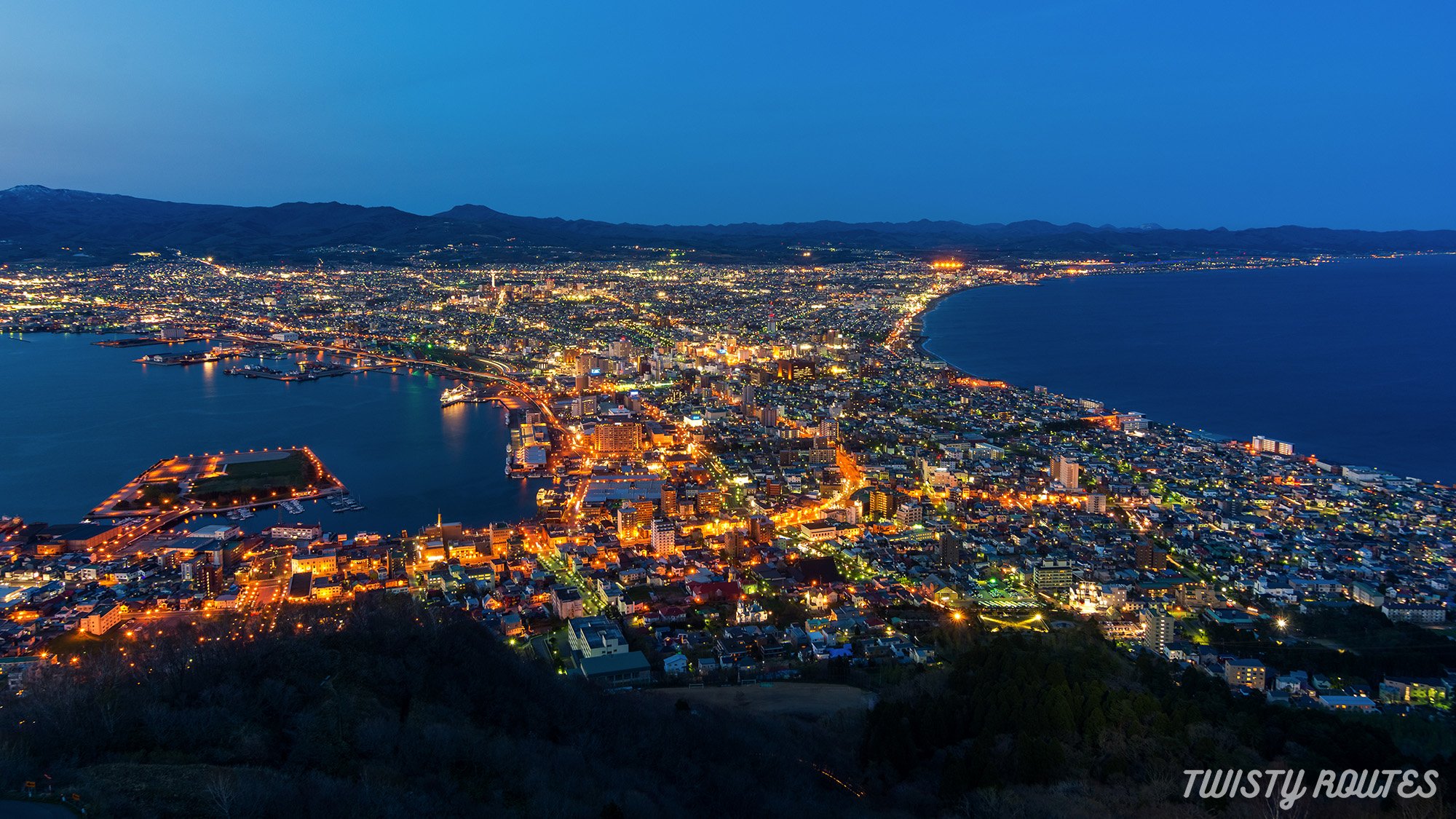
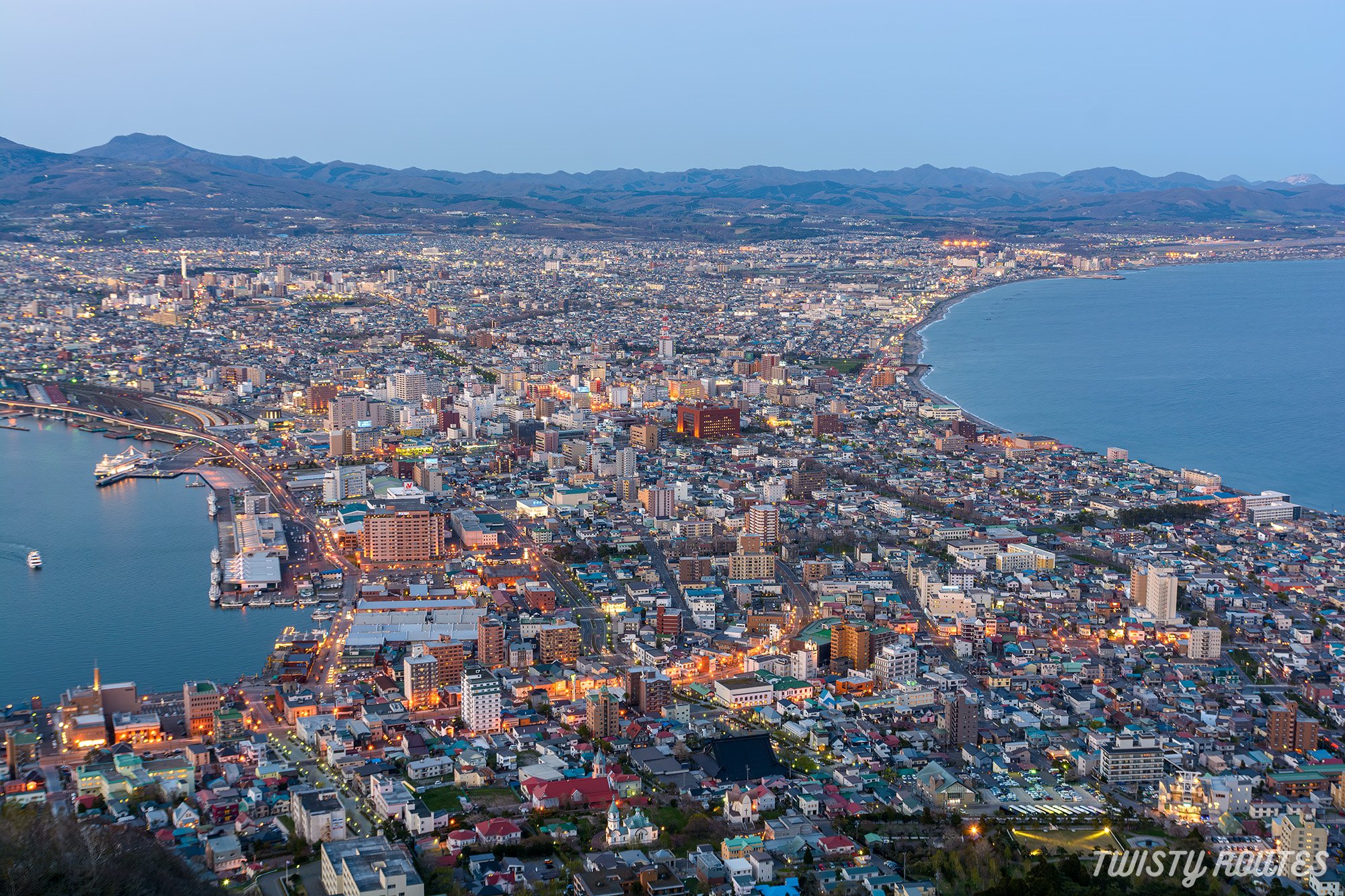
5. Motomachi
As a famous port city and the first harbour to open in Japan for western and foreign traders, many traders from Russia, China, and Western countries moved to Hakodate. Motomachi, which sits at the foot of Mount Hakodate, became the most favored district among the new foreign residents.
This area still contains many foreign buildings, such as the Russian Orthodox Church, the Old British Consulate, the Chinese Memorial Hall, and the old Hakodate Public Hall.
Tram stop: Jujigai, 5-7 minutes walk from here.
Ropeway Cost: 1500 yen for a round trip or 1000 yen one way
Opening Hours: 10:00 am to 9:00 pm (last uphill ropeway 8:50 pm), but check the official website if the timings change when you visit.
2 Bonus things not to miss -
- Manhole covers: While walking on the streets of Hakodate near the morning market and around the city, you will find these beautiful and unique manhole covers. These artistic covers depict symbols, events, and landmarks that represent the cultural identity of a particular city or region. Hakodate city’s manhole cover designs feature squid and the Hakodate Orthodox Church.
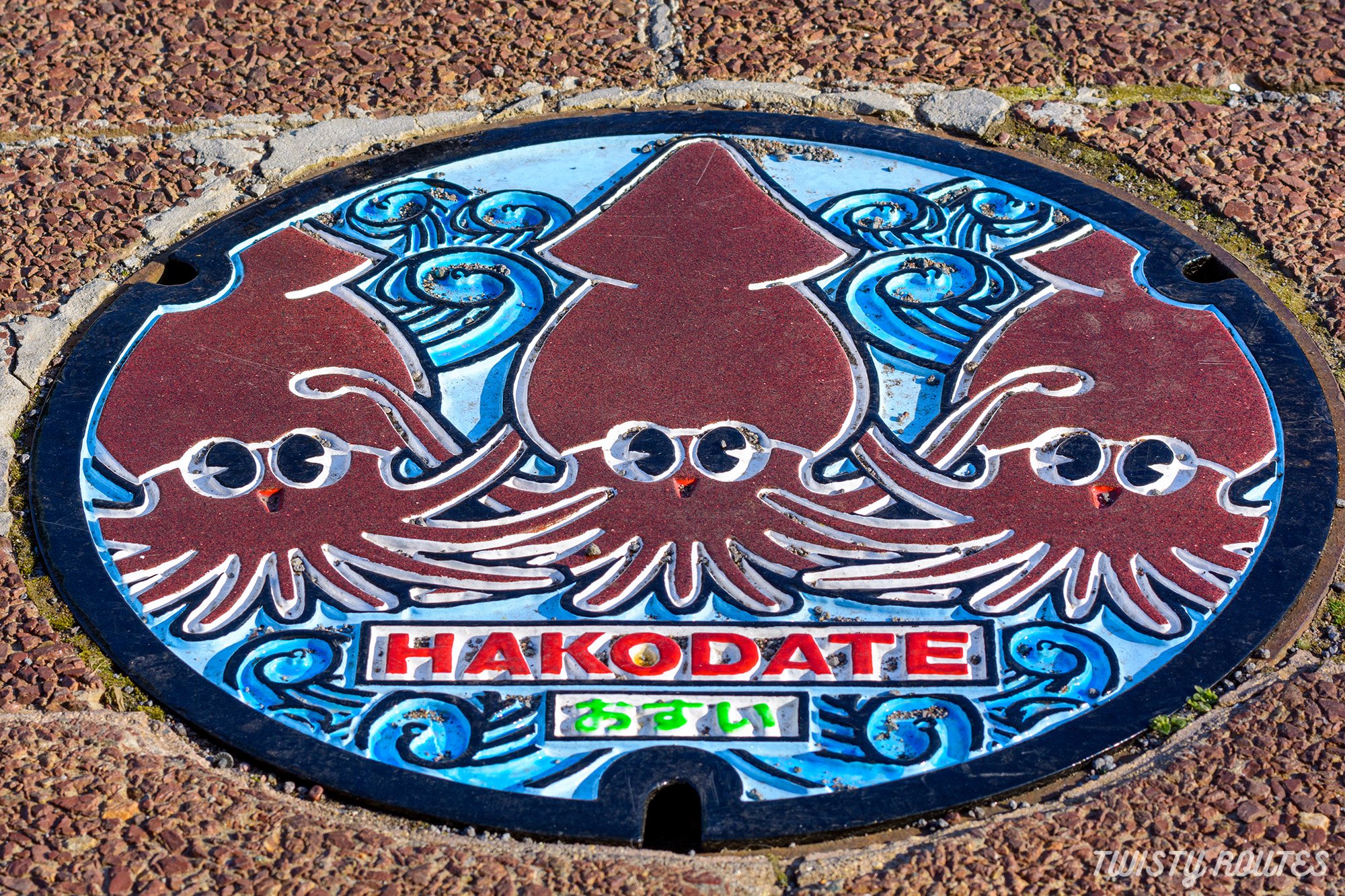

- Genghis Khan, a food specialty: For meat lovers, Hakodate is also known for lamb meat. The lamb meat/ lamb barbeque is popularly known as Genghis Khan (pronounced jingisukan in Japanese), served with the marinade made using apples and onions.
Genghis Khan/the lamb meat is grilled along with vegetables on a unique grill with a raised mound in the center. Earlier in Japan, when there was no custom of eating lamb or mutton, the meat was said to smell unpleasant and inedible, but over a period, it has become the comfort food in Hokkaido. During the hanami, one can taste this specialty of Hokkaido inside the Goryokaku Park. Also, there are many restaurants here, that serve this specialty all year long.
Getting There (From Sapporo To Hakodate)
Get the JR Hokkaido Rail Pass which is valid for 4, 5, and 7 consecutive days or flexible 4 days. This pass included unlimited rides on JR trains (excluding Hokkaido Shinkansen) and JR buses. A single journey on the JR train from Sapporo to Hakodate already costs between JP¥7,000 - JP¥11,000. So this pass will pay off if you plan to travel long distances and access major attractions in Hokkaido.
Hokuto and Super Hokuto trains depart hourly from Sapporo Station to Hakodate Station, with approximately 3 hours and 30 minutes of the train journey.
Buying the Tram Pass in Hakodate
If you are going to ride the tram more than 3 times in a day (which you mostly will if you visit Goryokaku Tower and Mt. Hakodate) - it’s convenient to get the one-day tram pass which costs 600 yen for adults and 300 yen for children.
You can buy them from:
- Tram drivers,
- Hotel front desks in Hakodate
- Hakodate Tourist Information Center at Hakodate Station.
These passes also have maps of the tram network. To use your pass simply scratch off the year, month, and day when you use it.
Trams in Hakodate
Riding the Hakodate city tram (also known as the streetcar) is fairly simple. Fares vary according to the distance traveled. You pay when you get off. Fares for adults are usually 210 yen to 260 yen.
If you don’t have the day pass - you can buy the tickets on board, get a numbered ticket from the ticket machine at the entrance when you board and when getting off drop your numbered ticket into the slot on the fare box by the driver. Your fare will be shown on a small display. and drop the exact coins into the slot on the fare box, as the fare box doesn’t give any change.
Trams also accept prepaid transportation smartcards used in Japan such as the Suica, Pasmo, Icoca, and Kitaca cards. Tap your card to the sensor by the door when you enter, and then the sensor at the front of the car when you get off.
Photo Gallery
